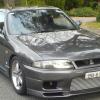Stock Turbo R33
Announcements
-
Similar Content
-
Latest Posts
-
By TurboTapin · Posted
That's incorrect. We have 4 seasons, consisting of pre winter, winter, post winter and a small glimpse of hope! -
It'll be fine. You're in Canada. Winter is coming.
-
By TurboTapin · Posted
I came into the garage to notice yet again, a couple drops of what seems to be molasses leaking from my right rear wheel well. I originally figured I ran something over and that it was harmless but this time I decided to check, as it was becoming repetitive. It's clearly leaking from the bushing. Not my picture, but this sucker right here. I've never actually seen this in all my years of driving. Our cars aren't getting any younger. I already have GKtech bushings on the shelf, but was hoping to push the work to winter. Once she's blows, is it still doing anything?
-






Recommended Posts
Create an account or sign in to comment
You need to be a member in order to leave a comment
Create an account
Sign up for a new account in our community. It's easy!
Register a new accountSign in
Already have an account? Sign in here.
Sign In Now